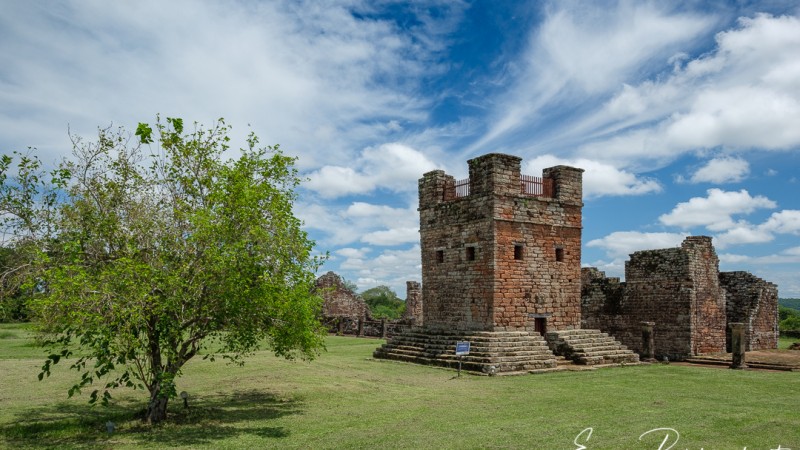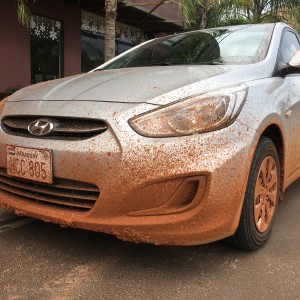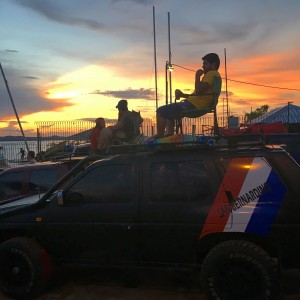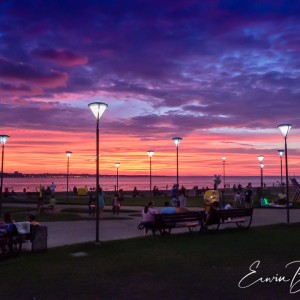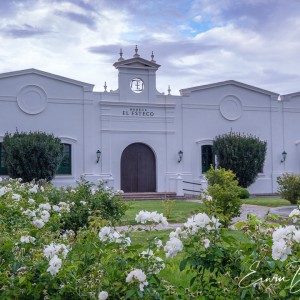After having visited the Chaco and its Mennonite community, we traveled to San Bernardino. San Bernardino, or Sanber, is supposed to be the place where the rich and famous of Asunción spend their free time. In reality, it is the place where the new middle class shows its acquired wealth. That means going out onto the lake with the jet ski and sit on the roof of your giant pickup truck with the stereo at ten to watch the sunset in the evening. Funny to watch. Not necessarily our preferred way of spending our free time. The village and a number of other villages on the large lake Ypacaraí are nice to visit. There is not much more to do, partly because the water is usually too filthy to swim in.
Encarnación is also a place where people come for their holidays. It is located in the south of Paraguay on the Paraná river. The river is very wide here and forms the border with Argentina. You can clearly see Posadas, the Argentine city. This is also the view from the beach where the, mainly Argentine, tourists linger. It is quite funny to discover a popular beach town that is not anywhere near the sea. The other major attraction in the area are the ruins of the Jesuits Reducciones, the missions that were founded after the arrival of the Jesuits in Paraguay in 1588 to convert the local population, the Guaraní Indians. After a change of power in Spain, King Charles III decided in 1767 to put an end to the influence of the Jesuits who were promptly expelled from Paraguay. The missions have since been neglected and there are now only (partially restored) ruins to be seen. The Jesuits apparently already knew damn well what the best places were to settle down so the ruins are all in beautiful locations and are well worth visiting.During this kind of trips you notice that tourism in Paraguay is very underdeveloped. You come across very few other tourists and they almost never come from European countries. You get used to that. After two weeks of Paraguay, we have arrived in Salta in the north of Argentina, and we suddenly realise that things are quite different here. The whole region is much more touristy and for the first time in a very long time we heard our own language being spoken in the wild.
The province of Salta is attractive because of the beautiful, rugged landscapes. But also because of the great wines that are produced here. The vineyards are among the highest in the world (above 1800 meters). The dry and poor soil is rich in minerals and that greatly benefits grapes such as the Torrontés. We did not know the wine from this grape before, but we like it a lot: it is a very tasty, aromatic, dry white wine with lots of minerals that has a good chance of becoming our new house-wine. Provided we can find it at home. Thanks to the wine industry, the poor and sparsely populated region has developed enormously. We notice it, among other things, by the level and quality of the food. It is all much more refined and better cared for than anything we have been served in the past two and a half months. So we are enjoying ourselves!